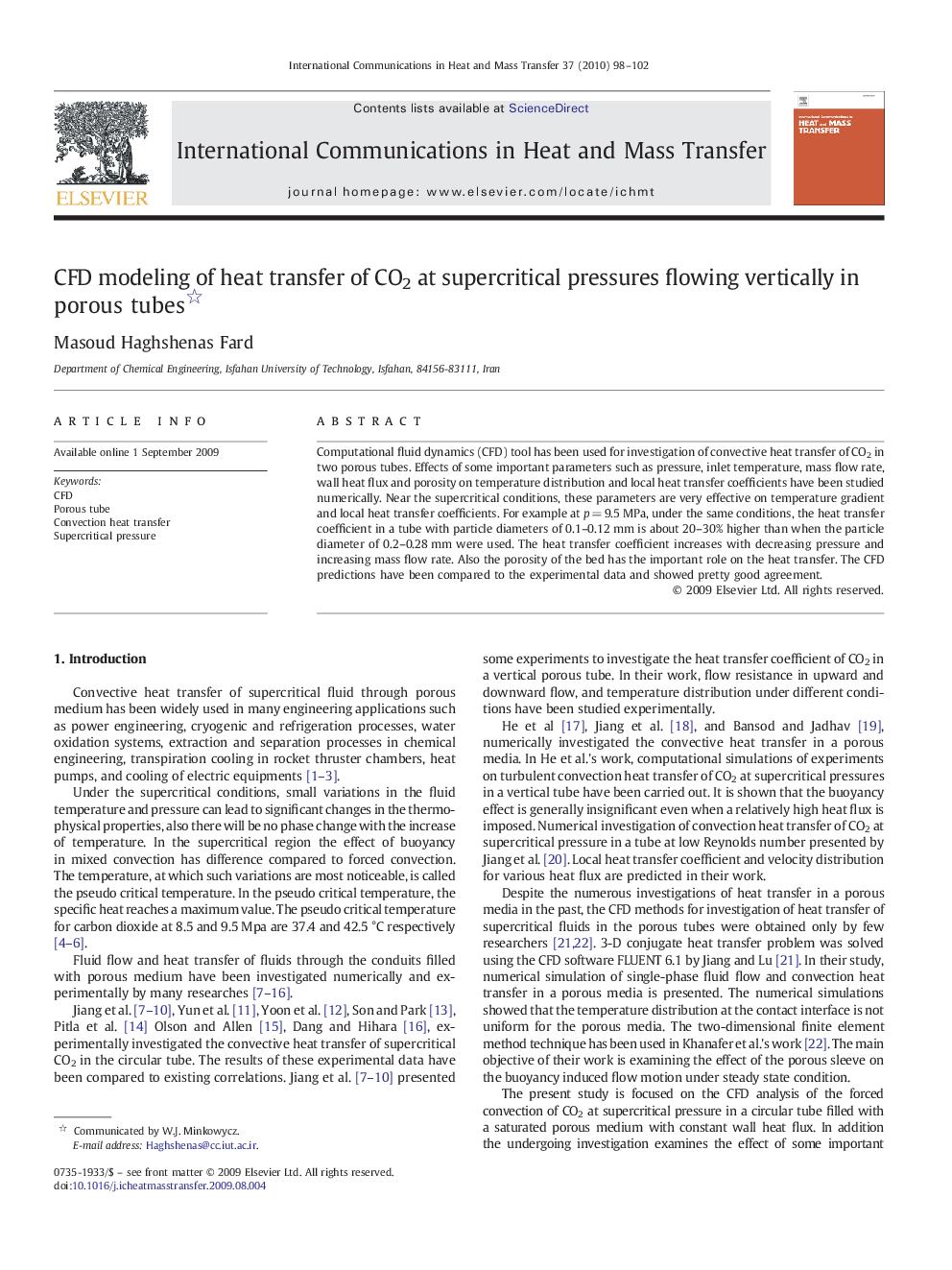| Article ID | Journal | Published Year | Pages | File Type |
|---|---|---|---|---|
| 654305 | International Communications in Heat and Mass Transfer | 2010 | 5 Pages |
Computational fluid dynamics (CFD) tool has been used for investigation of convective heat transfer of CO2 in two porous tubes. Effects of some important parameters such as pressure, inlet temperature, mass flow rate, wall heat flux and porosity on temperature distribution and local heat transfer coefficients have been studied numerically. Near the supercritical conditions, these parameters are very effective on temperature gradient and local heat transfer coefficients. For example at p = 9.5 MPa, under the same conditions, the heat transfer coefficient in a tube with particle diameters of 0.1–0.12 mm is about 20–30% higher than when the particle diameter of 0.2–0.28 mm were used. The heat transfer coefficient increases with decreasing pressure and increasing mass flow rate. Also the porosity of the bed has the important role on the heat transfer. The CFD predictions have been compared to the experimental data and showed pretty good agreement.
